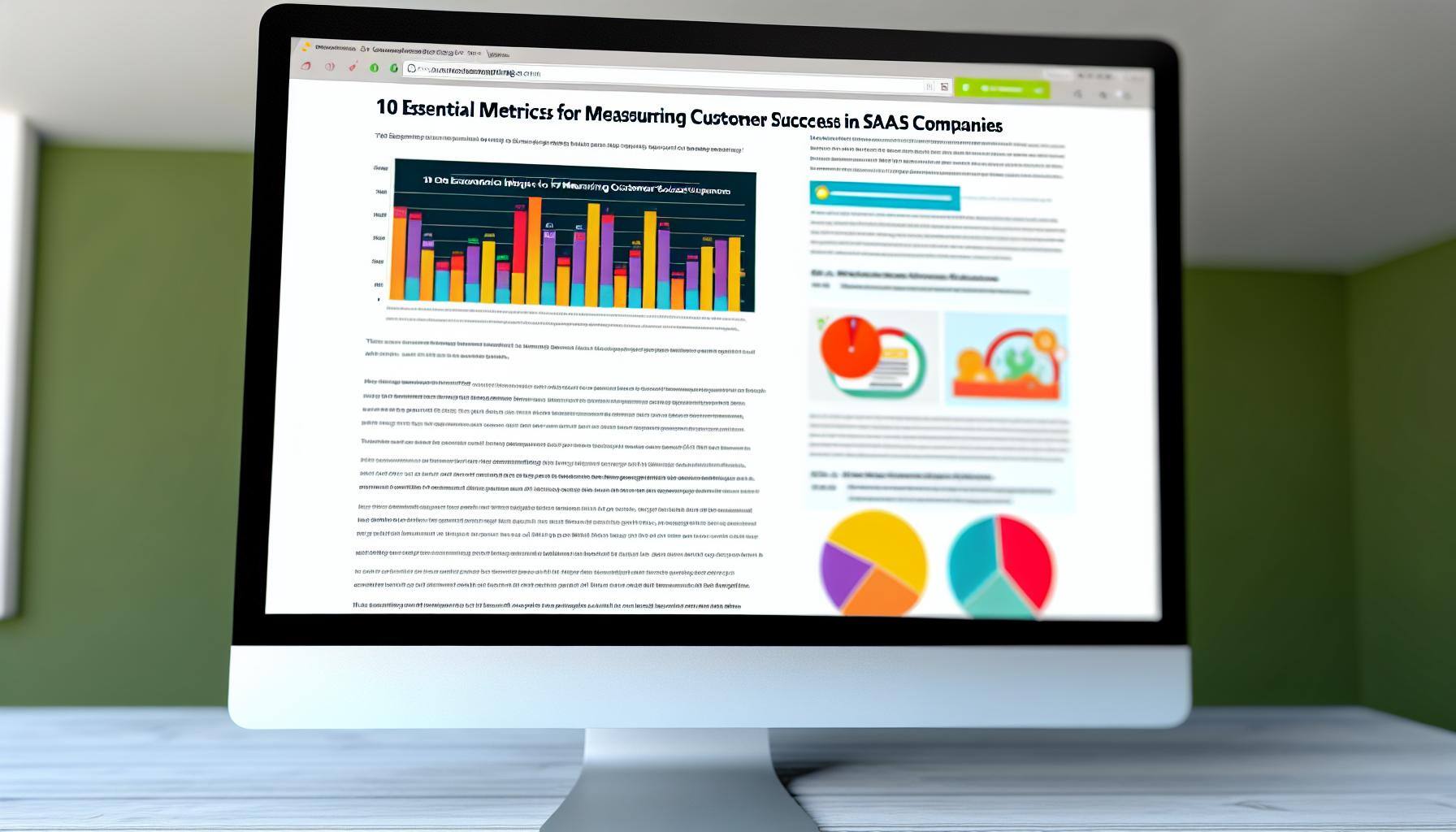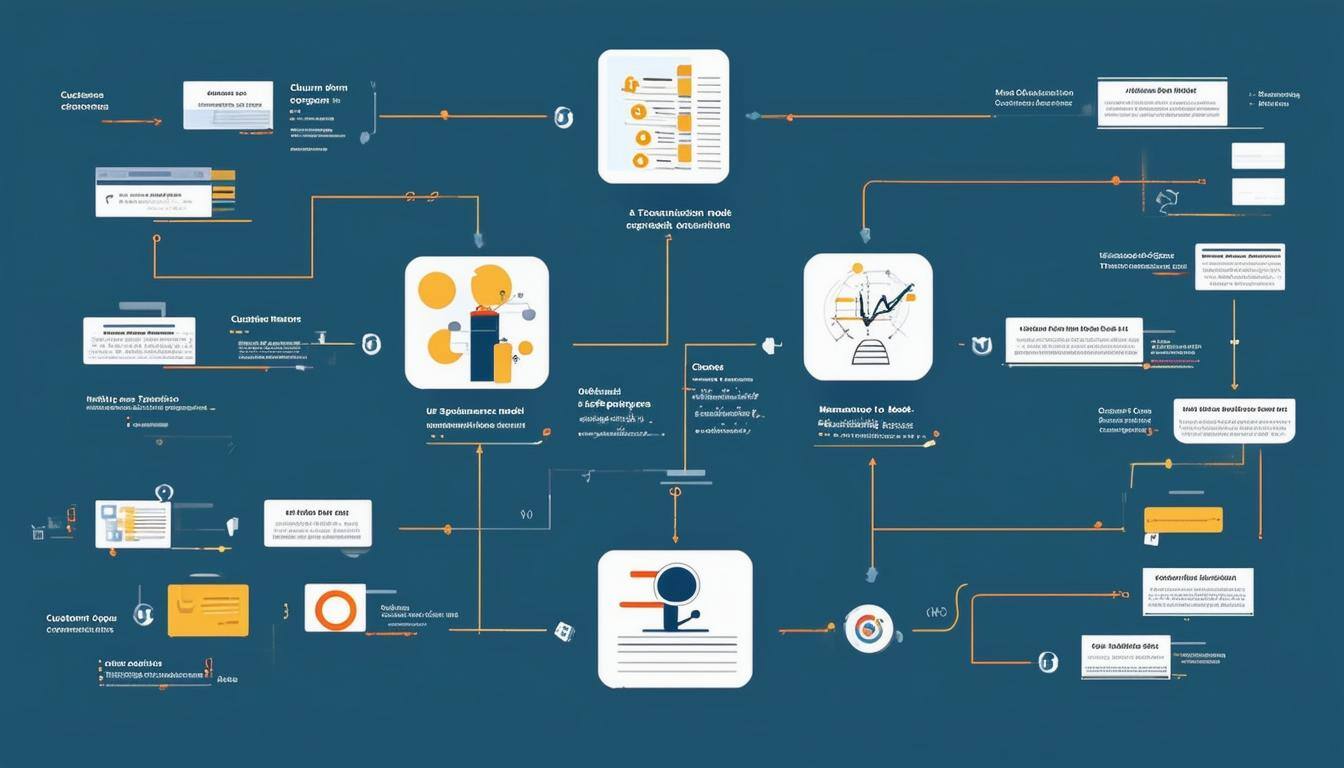Mastering Customer Success in B2B SaaS: Strategies for Retention and Growth
In B2B SaaS, keeping customers happy is the key to growing your business and making sure they stick around. By mastering customer success strategies,...
4 min read
Brian Polackoff
:
Aug 5, 2024 2:59:00 PM

Measuring customer success effectively is crucial for SaaS companies aiming to thrive in a competitive landscape. By leveraging key metrics, businesses can gain insights into the health and satisfaction of their customers. In this article, we will delve into essential metrics that measure customer success in SaaS companies, explore ways to enhance customer experience, and highlight strategies to improve customer retention and acquisition.
Customer Lifetime Value (CLV) is an essential metric that helps SaaS companies understand the total revenue they can expect from a customer over the entire duration of their relationship. CLV is calculated by estimating the average purchase value, the purchase frequency rate, and the average customer lifespan. Accurately measuring CLV allows companies to make informed decisions on customer acquisition and retention strategies, thereby maximizing profitability and enhancing overall customer success.
Customer Acquisition Cost (CAC) represents the cost a company incurs to acquire a new customer. It involves calculating expenses related to marketing, sales, and other activities aimed at attracting new customers. Lowering CAC while maintaining or increasing revenue leads to a higher return on investment (ROI), which is fundamental for SaaS businesses. Understanding and optimizing CAC is essential for ensuring sustainable growth and customer success in SaaS.
Customer Churn Rate is a pivotal metric that quantifies the percentage of customers who discontinue their subscriptions over a given period. High churn rates can signify underlying issues in customer satisfaction, product market fit, or customer support. By closely monitoring and reducing churn rates, SaaS companies can improve customer retention and secure long-term success. Effective churn management involves analyzing churn trends, understanding customer pain points, and implementing initiatives to enhance customer engagement.
Several tools and strategies assist SaaS companies in measuring customer satisfaction. Surveys like Net Promoter Score (NPS) and Customer Satisfaction (CSAT) surveys are widely employed metrics, providing direct feedback from customers. Additionally, customer effort score (CES) measures the ease with which customers get their issues resolved, indicating the efficiency of customer support. Utilizing these tools allows companies to gather actionable insights, which can be used to improve customer success strategies and overall customer experience.
Customer support interactions play a significant role in shaping customer experience. Prompt and effective customer support helps in resolving issues quickly, thereby enhancing customer satisfaction. SaaS companies should not only focus on resolving customer queries but also on identifying recurrent issues and implementing proactive measures to prevent them. An efficient customer success team equipped with the right tools and training can foster positive customer relationships and contribute to improved customer loyalty.
Gathering customer feedback is vital for understanding customer needs and improving product offerings. Best practices include using multiple channels for feedback, such as surveys, social media, and direct interviews. Analyzing customer feedback helps in identifying trends, uncovering hidden issues, and gauging overall customer sentiment. SaaS companies should establish a structured process for collecting, analyzing, and acting on customer feedback to continuously improve customer satisfaction and success.
Customer Retention Rate (CRR) measures the percentage of customers who continue to use a SaaS product over a set period. It is calculated by dividing the number of retained customers by the number at the start of the period, multiplied by 100. Analyzing CRR helps companies understand the effectiveness of their retention strategies and identify areas needing improvement. High retention rates indicate strong customer satisfaction, loyalty, and a sustainable business model.
Improving customer retention involves implementing strategies that enhance customer satisfaction and loyalty. These strategies include personalized customer engagement, consistent communication, and offering value-added services. Creating a customer community, providing ongoing education, and addressing customer pain points proactively can also foster loyalty. Effective deployment of a customer success team to manage and nurture customer relationships plays a vital role in retaining customers.
Customer loyalty is a crucial factor for retaining customers. Loyal customers are less likely to churn and more likely to advocate for the product, bringing in new customers through referrals. Building loyalty involves delivering a consistently high-quality product, exceptional customer support, and personalized experiences. By focusing on customer loyalty, SaaS companies can create a loyal customer base that contributes to long-term success and reduced customer acquisition costs.
Customer Health Score is an aggregate metric used to gauge the overall well-being and satisfaction of a customer. It is developed by combining various data points, including product usage, support interactions, and customer feedback. Companies can use customer health scores to identify at-risk customers and take proactive measures to address potential issues. A well-constructed health score enables the customer success team to prioritize resources effectively and improve customer outcomes.
Several indicators reflect customer health, including product usage rates, engagement levels, and support ticket frequency. High engagement and frequent usage are positive indicators of customer health, whereas an increase in support tickets or declining usage could signal potential dissatisfaction. Monitoring these indicators helps SaaS companies pinpoint areas for improvement and enhance overall customer success strategies.
Acting on customer health data involves a systematic approach to addressing the insights obtained from health scores. Companies should implement targeted interventions for at-risk customers, such as personalized outreach and tailored product support. Regularly revisiting and updating health scores based on customer interactions ensures that companies remain proactive in maintaining strong customer relationships and improving customer success in SaaS.
Effective customer acquisition channels vary depending on the target audience and business model. Common channels include digital marketing, social media campaigns, search engine optimization (SEO), and content marketing. Referral programs and partnerships can also be significant in acquiring new customers. SaaS companies should evaluate the efficacy of various channels and allocate resources to the most productive ones, ensuring efficient customer acquisition and growth.
Balancing customer acquisition and retention efforts is critical for sustainable growth. While attracting new customers is essential, retaining existing ones is equally important to ensure long-term success. SaaS companies should allocate resources to both acquisition and retention strategies, aligning them to maximize overall customer success. Striking the right balance involves understanding the customer lifecycle, optimizing customer acquisition cost, and focusing on enhancing customer loyalty and satisfaction.
Metrics to track for new customer acquisition include Customer Acquisition Cost (CAC), conversion rate, and the number of new customers acquired over a given period. Monitoring the effectiveness of acquisition channels and the quality of acquired leads is also crucial. These metrics help SaaS companies refine their marketing strategies, optimize acquisition efforts, and ensure that new customers align with their target audience and business goals.

In B2B SaaS, keeping customers happy is the key to growing your business and making sure they stick around. By mastering customer success strategies,...

In the fast-paced world of Software as a Service (SaaS), understanding customer behavior and satisfaction is crucial in maintaining a competitive...

Understanding your customers is a lot like being the captain of a ship—you need to keep everyone on board if you want to sail smoothly. One of the...